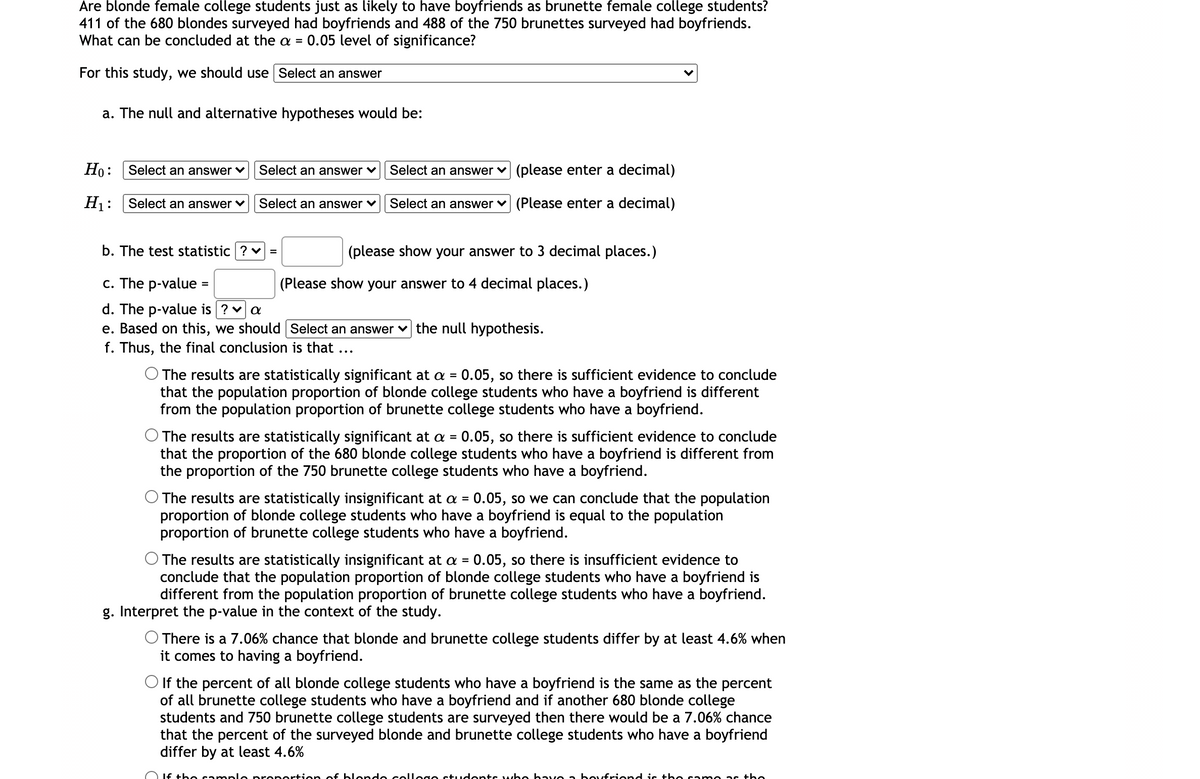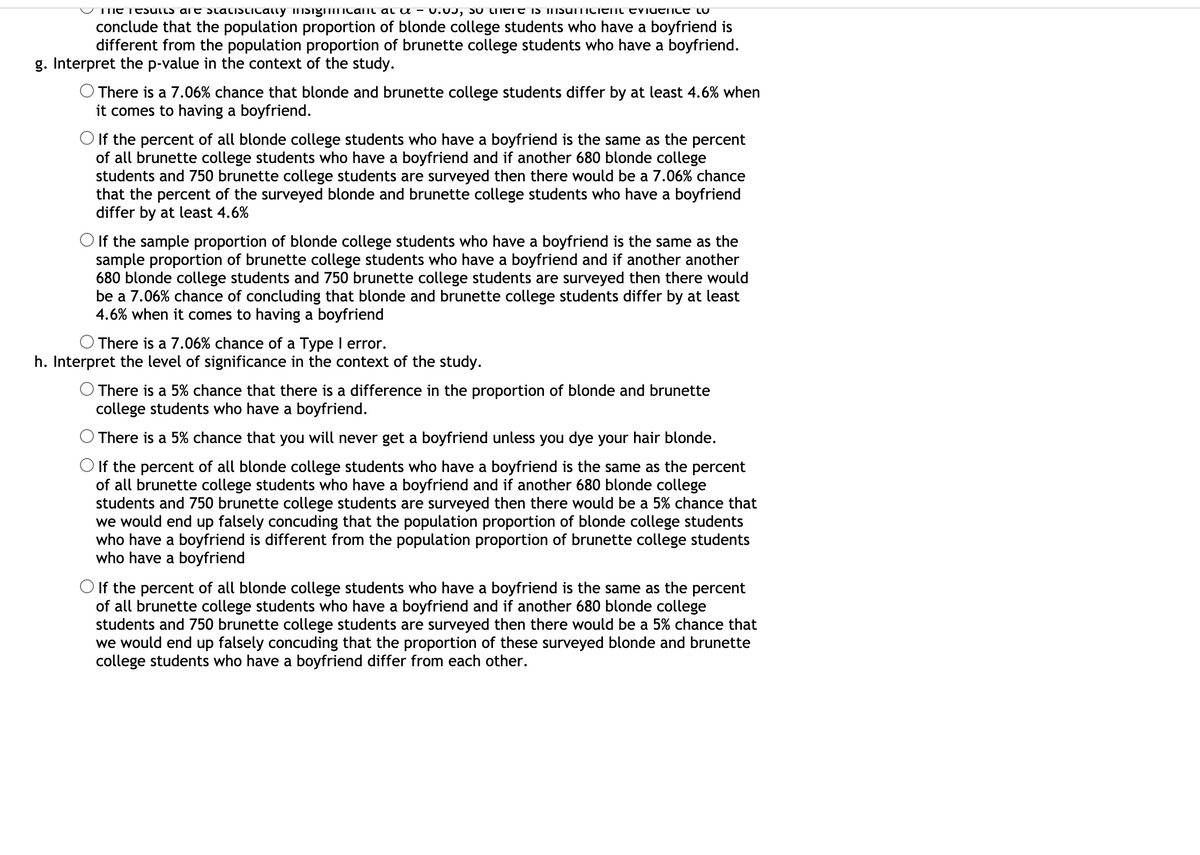Are blonde female college students just as likely to have boyfriends as brunette female college students? 411 of the 680 blondes surveyed had boyfriends and 488 of the 750 brunettes surveyed had boyfriends. What can be concluded at the a = 0.05 level of significance? For this study, we should use Select an answer a. The null and alternative hypotheses would be: Ho: Select an answer v Select an answer v Select an answer v (please enter a decimal) H: Select an answer v Select an answer v Select an answer v (Please enter a decimal) b. The test statistic ?v = (please show your answer to 3 decimal places.) c. The p-value = d. The p-value is ?v a e. Based on this, we should Select an answer ♥ the null hypothesis. f. Thus, the final conclusion is that ... (Please show your answer to 4 decimal places.) O The results are statistically significant at a = 0.05, so there is sufficient evidence to conclude that the population proportion of blonde college students who have a boyfriend is different from the population proportion of brunette college students who have a boyfriend. O The results are statistically significant at a = 0.05, so there is sufficient evidence to conclude that the proportion of the 680 blonde college students who have a boyfriend is different from the proportion of the 750 brunette college students who have a boyfriend. O The results are statistically insignificant at a = 0.05, so we can conclude that the population proportion of blonde college students who have a boyfriend is equal to the population proportion of brunette college students who have a boyfriend. O The results are statistically insignificant at a = 0.05, so there is insufficient evidence to conclude that the population proportion of blonde college students who have a boyfriend is different from the population proportion of brunette college students who have a boyfriend. g. Interpret the p-value in the context of the study. O There is a 7.06% chance that blonde and brunette college students differ by at least 4.6% when it comes to having a boyfriend. Olf the percent of all blonde college students who have a boyfriend is the same as the percent of all brunette college students who have a boyfriend and if another 680 blonde college students and 750 brunette college students are surveyed then there would be a 7.06% chance that the percent of the surveyed blonde and brunette college students who have a boyfriend differ by at least 4.6%
Compound Probability
Compound probability can be defined as the probability of the two events which are independent. It can be defined as the multiplication of the probability of two events that are not dependent.
Tree diagram
Probability theory is a branch of mathematics that deals with the subject of probability. Although there are many different concepts of probability, probability theory expresses the definition mathematically through a series of axioms. Usually, these axioms express probability in terms of a probability space, which assigns a measure with values ranging from 0 to 1 to a set of outcomes known as the sample space. An event is a subset of these outcomes that is described.
Conditional Probability
By definition, the term probability is expressed as a part of mathematics where the chance of an event that may either occur or not is evaluated and expressed in numerical terms. The range of the value within which probability can be expressed is between 0 and 1. The higher the chance of an event occurring, the closer is its value to be 1. If the probability of an event is 1, it means that the event will happen under all considered circumstances. Similarly, if the probability is exactly 0, then no matter the situation, the event will never occur.


Step by step
Solved in 4 steps with 1 images









